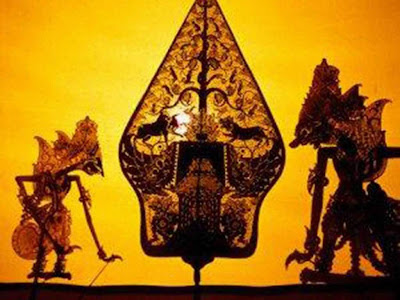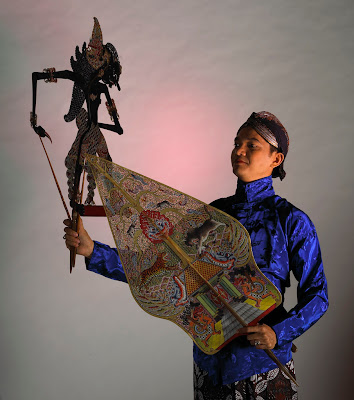Wayang Kulit Indonesian Culture and Tradition -
Travel Guide Ideas. Wayang kulit / Wayang Golek is a famous traditional form of puppetry in Indonesia, mainly in Java and Bali. ‘Wayang’ means ‘shadow’ in Javanese and ‘kulit’ means leather or skin.
 |
| Wayang Kulit |
‘Wayang’ has come to mean ‘puppet’ in Bahasa Indonesia, and is applied to the three forms of Javanese puppets:
wayang kulit (shadow puppets), wayang klitik (flat wood puppets), and wayang golek (rod puppets).
 |
| Wayang Kulit Indonesian Culture |
 |
| The wayang kulit art form may be over 800 years old |
The wayang kulit art form may be over 800 years old. The fact that the story is told using shadows is very important since moving shadows can be seen but never touched. One belief was that the souls of the ancestors were brought to life as shadows that provided advice and support. So wayang kulit performances have a spiritual and magical significance for
Javanese and Balinese people. Everyone present at a shadow puppet performance is believed to be protected from evil influences while the play lasts. People will sponsor a performance to give thanks for someone recovering from illness.
The screen represents the white universe in which people live their lives. The bright side of the screen represents the material world in which we live. The darker side represents the mysterious after-life. The blencong or oil lamp was often in the shape of the Garuda bird, and represents the rays of the sun which give life to every living thing. Read to
Reog Ponorogo Indonesian Culture and Tradition. Wayang Kulit Indonesian Culture and Tradition